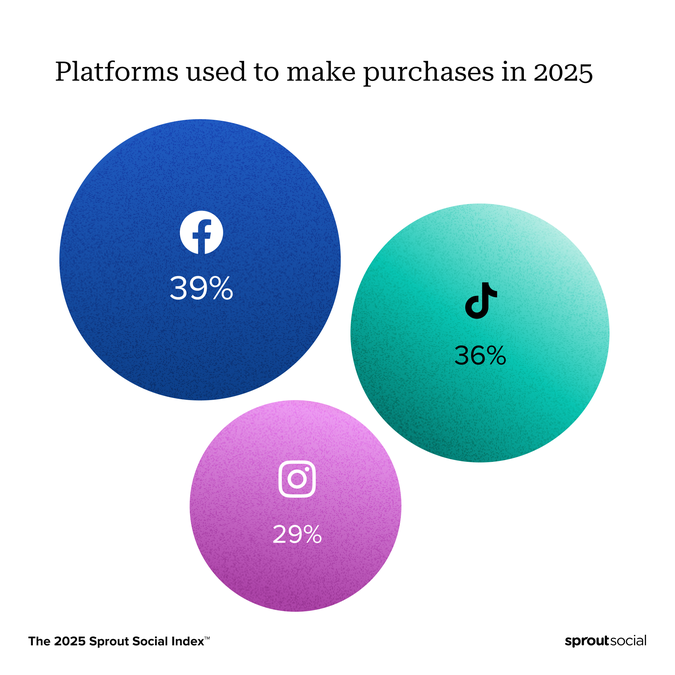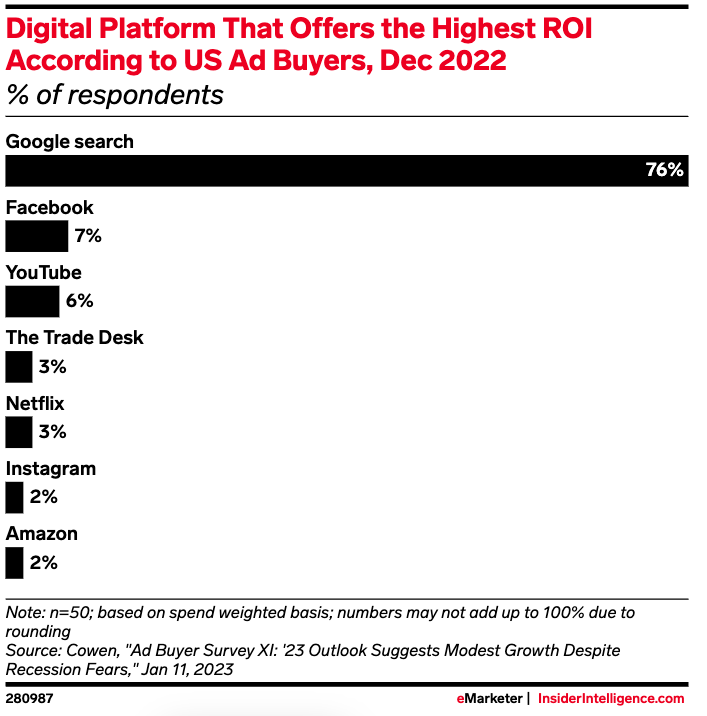Social media ROI statistics marketers need to know in 2025

Table of Contents
Social media ROI reports often present a challenge: a disconnect between available metrics and actual business impact. Social teams need to prove real business impact, but the metrics social networks traditionally surface—reach, click-through rates and impressions—weren’t designed for that purpose.
Tying these metrics to revenue or other business goals is hard without the right tools. Plus, inconsistent definitions across attribution models make comparisons across channels fall apart.
While metrics like reach and impressions may not automatically translate to immediate ROI, they are key indicators of social’s impact. Teams should focus on framing these metrics into a larger story that demonstrates their measurable contribution to business objectives, including revenue. But even robust data can fall flat without the right story to tie it to business goals.
Arming yourself with clearer benchmarks and industry statistics isn’t just helpful—it’s the key to confidently explaining what’s working, defending your social media marketing strategy and making smarter decisions that drive future success.
15 social media ROI statistics and trends for 2025
The gap between what marketing leaders want and what teams can deliver will define social media ROI in 2025.
The 2025 Sprout Social Index™ reveals the expectations of leaders:
- 65% want to see direct connections between social media campaigns and business goals
- 52% want quantifiable cost savings across social channels
- 45% want better visualizations of social data
Although 97% of leaders believe they can communicate social media’s value, only 30% of marketers believe they could measure social media ROI.
The undeniable influence of social content on consumer spending underscores social media’s impact. According to the Index, 81% of consumers are swayed by social media to make spontaneous purchases multiple times a year. Plus, with more consumers making in-app purchases (currently at 13% overall and rising to 50% with Gen Z), it’s getting easier to track where sales and revenue are coming from. Use these statistics to see how your social media performance compares to the rest of the industry.
ROI benchmarks by platform
Use these benchmarks as conversation starters—not absolute truths. While Facebook often dominates the conversation, what works for the average marketer might not work for you.
These statistics reflect perceived and actual social channel performance. And let’s face it—different audiences behave differently (Hey, Gen Z on TikTok!). Ultimately, your own data will provide more insights into what works for your target audience. Knowing that industry averages are just a starting point, here are social media marketing ROI statistics to consider in 2025:
1. Consumers make purchases on Facebook first
When consumers are ready to make a purchase on social media, Facebook is frequently the first network they turn to (39% of consumers), followed closely by TikTok at 36% and Instagram at 29%. The pattern shifts dramatically for Gen Z. TikTok is the clear frontrunner for their social media purchases.
2. B2B marketers rate Facebook’s ROI highest
A Statista survey reports that Facebook leads in perceived B2B ROI, with 22% of respondents saying it’s the highest. Instagram, TikTok and YouTube came in second. Each was mentioned by 16% of respondents.
3. Facebook ranks among the top ROI social channels for 28% of marketers
A global survey of marketers in October 2024 revealed that Facebook is widely considered the platform that delivers the highest ROI (28% of respondents). Instagram came in second (22% of respondents), followed by YouTube, cited by 12% of respondents.
4. Many marketers said they trust LinkedIn to deliver a positive ROI
Trust in LinkedIn to deliver positive ROI is high among marketers. A global August 2023 social media marketing survey showed marketers’ confidence level reached 70%.
Instagram followed LinkedIn with a 68% trust rate for positive ROI. WhatsApp rounded out the top three at 66%. X (formerly Twitter) saw 70% of marketers indicating a lack of trust in its ability to provide positive ROI.
Key social media advertising metrics by platform
Don’t let ROI claims touted by social networks overshadow the data. In social media, smart execution beats platform selection. The data shows that while networks battle to boast the highest ROI, real performance gains hinge on execution: visible logos, quality creative, brand-focused marketing campaigns and full-funnel approaches boost your returns.
The following social media statistics show that a well-executed campaign on a “lower ROI” platform can crush a poorly executed one on a network that boasts higher returns. Stop overanalyzing which network to choose and start mastering the principles and practices that drive successful campaigns across your entire social program.
5. Facebook has the highest social media ad ROI
According to a December 2022 survey of US ad buyers, 7% of respondents believe Facebook offers the highest social media ad ROI, with YouTube at 6%.
While social’s combined 15% doesn’t rival organic search’s 76%, the data reminds us why savvy marketers use social as part of a broader marketing strategy rather than placing all bets on search. An integrated approach maximizes the unique advantages each platform offers.
HawkSEM, a social media marketing agency, claims advertisers can expect a good Facebook Ads campaign to yield ROI between 4x and 5x of spend. Layer your campaign with expert strategies, and you can multiply your ROI.
6. TikTok ranks among the most effective ROI channels
Despite its explosive growth during the same time, TikTok was absent from the eMarketer US ad buyers survey above. TikTok’s own research with Dentsu highlights its strong ROI potential, with an impressive short-term ROI of 11.8%. Their internal research also shows that 75% of advertisers achieved their highest ROI on TikTok compared to other social channels.
The data from TikTok’s internal research makes a strong case for including TikTok in any ROI conversation.
7. A full-funnel YouTube strategy drives a 9% increase in conversions
You can do more on YouTube than build brand awareness. Google’s internal data demonstrates that brands should deploy YouTube across the customer journey. Combining top and bottom funnel approaches creates a stronger connection with viewers that pays off in measurable returns.
8. Awareness formats drive 28% of conversion assists for advertisers
A recent Think with Google study shows the danger of underestimating the impact of awareness content on your conversion rate goals. Those early upper-funnel touchpoints do a lot of heavy lifting behind the scenes, prepping your audience to be more receptive to your conversion ads later.
9. Brand-metric focused LinkedIn campaigns impact business results
Research from Les Binet and Peter Field for LinkedIn’s B2B Institute shows that brand-focused campaigns achieve four times the bottom-line impact compared to campaigns that don’t prioritize brand metrics.
Brand-focused campaigns are also more likely to show a 50% improvement in short-term activation metrics, including marketing qualified leads (MQLs). The companies with the most effective lead generation strategies have 71% more brand-focused marketing roles on their teams.
10. Creative fuels nearly 50% of YouTube ROI
The quality of your social media ad creative will have a bigger impact on your YouTube ad spend than almost anything else. According to Think with Google research, creativity will account for nearly half of your campaign’s return. If your ads follow YouTube’s ABCD guidelines (attention, branding, connection, direction), you could see a 30% higher sales lift.
11. Visible logos on ads can drive 5x ROI on Facebook
Research from Meta and Analytic Partners reveals that making your logo visible, especially within the first two seconds of an ad, can result in 5X higher ROI on Facebook. The research also indicates that format matters. Ads optimized for mobile—using square and tall formats—nearly double returns compared to assets that aren’t mobile-friendly.
Trends impacting ROI in 2025
These trends make one thing clear: Social delivers marketing ROI when it functions as a product education, customer support and community channel all at once. To succeed, marketers must move past separating content, care and commerce and work to connect all three intentionally and visibly on each network.
12. Social networks accounted for 17.11% of all online sales
According to Statista research, social networks generated 17.11% of total online sales in 2025. The global social commerce sector is growing at a 13.7% compound annual growth rate (CAGR) and is projected to pass $1 trillion by 2028.
13. Influencer posts inspire monthly purchases for 49% of consumers
According to Sprout Social’s 2024 Influencer Marketing Report, Gen Z and millennials are most likely to buy products recommended by influencers, doing so daily or weekly. But the reach of influencers has no demographic borders: 86% of all consumers make at least one influencer-driven purchase a year, underscoring social media’s impact on buyer behavior.
14. Short-form videos are the top ROI driver for 71% of video marketers
A December 2024 Statista survey confirms short-form video reigns supreme as the revenue powerhouse of social content marketing. The competition isn’t even close. Only 22% of marketers said long-form video had the highest ROI, and live video lagged further behind at 6%.
15. User-generated content (UGC) influences 90% of shoppers’ buying choices
Results from a TurnTo study reveal that UGC outperforms search engines. 87% of consumers believe UGC influences their buying decisions, and 81% are willing to pay more and accept longer delivery times for products featuring authentic UGC.
How Sprout Social helps you maximize social media marketing ROI
When you can measure the value of social media marketing, you can manage it. To measure the social media ROI that counts, you need to collect social performance data, lean on strong data-storytelling and link that data to business results.
Sprout delivers the social media insights teams need to demonstrate real value by simplifying how teams:
- Track performance across multiple networks in a unified dashboard that separates paid from organic marketing efforts and shows which investments deliver results.
- Connect specific social media efforts to business outcomes through engagement trendlines, audience growth charts and post-level performance data.
- Build convincing ROI narratives with regularly scheduled reports that reduce manual data collection and foster alignment with leadership.
- Identify the highest-performing content types, formats and networks to allocate resources toward what’s actually working.
- Compare campaign effectiveness across social networks with standardized metrics that simplify evaluation.
Sprout’s platform reduces the friction between your marketing budget spending and proving value. Teams can spend less time compiling reports and more time optimizing performance.
Try Sprout for free today to transform how you track and report social ROI—or explore our complete analytics toolkit to see all available measurement options.
Social Media Marketing ROI FAQs
What is a good ROI for social media marketing?
There’s no universal benchmark for social ROI. For paid campaigns, a 5:1 return is a standard expectation. Organic success typically manifests as increased leads, conversions or improved customer retention over time rather than immediate revenue generation.
Does social media deliver immediate returns?
Paid campaigns, product launches and social e-commerce can generate quick returns. But most social programs build value gradually by developing awareness, trust and engagement with their audience and a shrewd understanding of a network’s algorithm. This longer-term approach is widespread in B2B and brand marketing, where customer journeys extend beyond a single interaction.
Is it hard to prove social media ROI?
The challenge has decreased significantly with improved analytics. Modern tools such as Sprout Social can track conversions, connect engagement rate to business metrics and distinguish between paid and organic performance.
The real difficulty isn’t measurement—it’s confidently telling the story of how social aligns with broader business objectives.









Share